Rosa de la Cruz may live in a quintessentially British building—one of the old Victorian mansions of Knightsbridge, some of which have been converted into spacious apartments—but the interiors of her home are far from traditional. “People are taken aback when they walk in,” says the jewelry and interior designer of her gallery-like reception rooms. “London doesn’t tend to have white spaces unless it’s a very modern building, and then to see these huge paintings on the walls, it’s very unexpected here.”
For de la Cruz, who grew up in a family of art collectors, coexisting with colossal, museum-worthy works of art is nothing unusual. Her parents are Carlos and Rosa de la Cruz, the Cuban founders of Miami’s de la Cruz Collection, a contemporary art museum in the Design District. Inspired by her art-filled upbringing, de la Cruz began buying pieces on her own before she finished college. Over the past three decades, her collection has grown to include dozens of paintings by the likes of Chris Ofili, Damien Hirst and Laura Owens, artists who at one time or another defined contemporary art’s zeitgeist. In the recently renovated late-1800s apartment she shares with her partner and, intermittently, her children (de la Cruz is the mother of four boys: two teenagers who are at boarding school in the U.K. and two 20-somethings who live in the U.S), these artworks take center stage.
Art collector and designer Rosa de la Cruz lives with her partner in a sprawling Victorian apartment in London’s Knightsbridge area. Her striking, large-scale contemporary artworks take center stage in the home, whose reception rooms were painted white to create a gallery-like atmosphere. “The anchor here is the Beatriz Milhazes work, one of the first pieces I bought 30 years ago,” says de la Cruz of the bright painting hanging on the family room’s right wall. “There are lots of circles and colors throughout the room; I create threads that go across spaces, picking up motifs, sometimes subconsciously.”

This corner of the family room, which overlooks a private garden, is furnished with a white metal “Ferro” desk by Piero Lissoni and white “Soft Pad” leather chairs by Charles & Ray Eames. “I worked out of here when I founded my company,” says de la Cruz, referring to the jewelry line she launched a decade ago with former fashion director Tierney Horne. On the back wall, we see an abstract painting by American artist Christopher Wool.
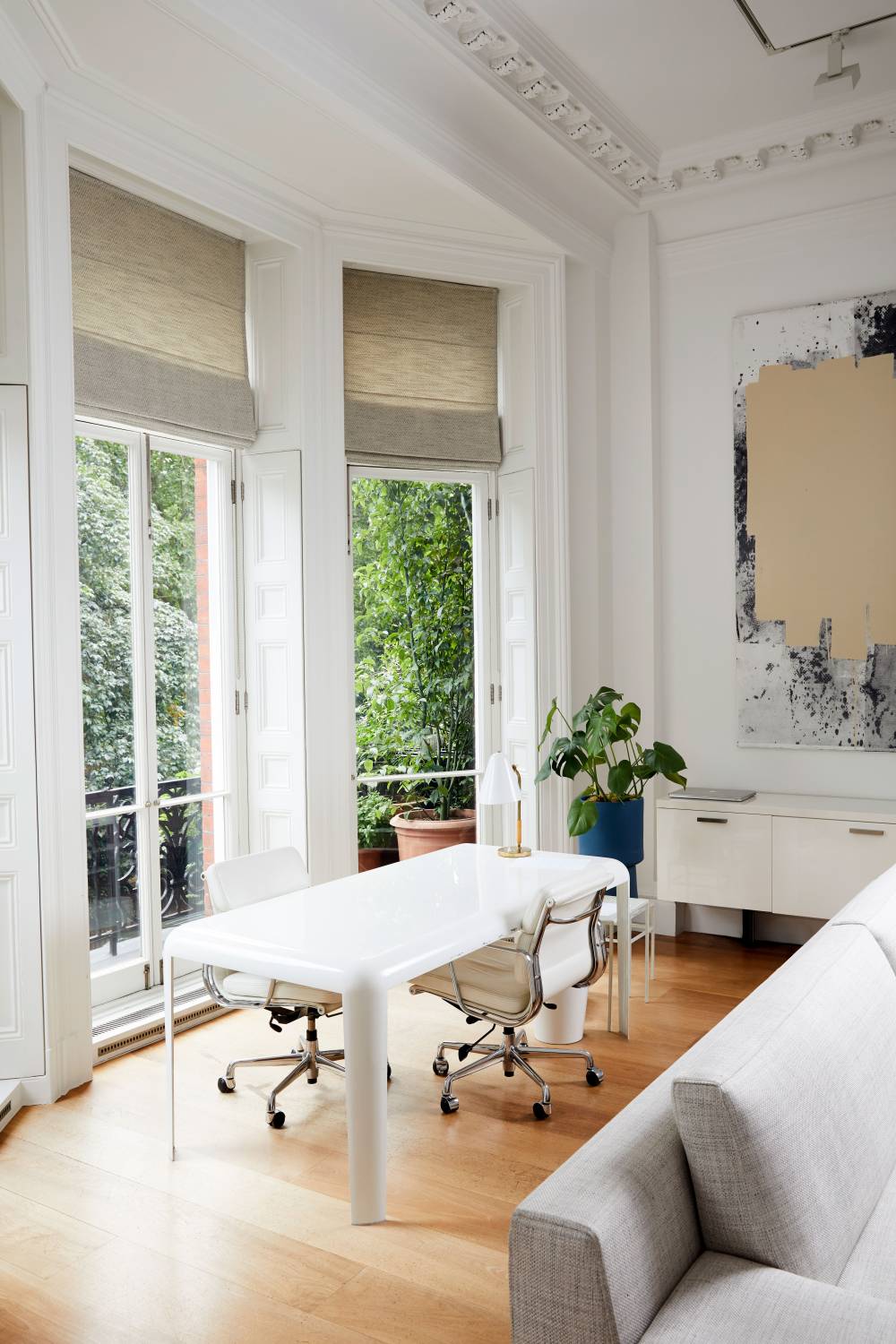
Another view of the ballroom-sized family room shows a Pierre Jeanneret writing chair, designed in the ’50s for the science department of Panjab University in Chandigarh. It sits next to a wooden stool by Charlotte Perriand, who collaborated with Jeanneret on multiple occasions. Lucien Smith’s STP (2014), an irregularly shaped enamel-on-canvas work, adds color and whimsy.
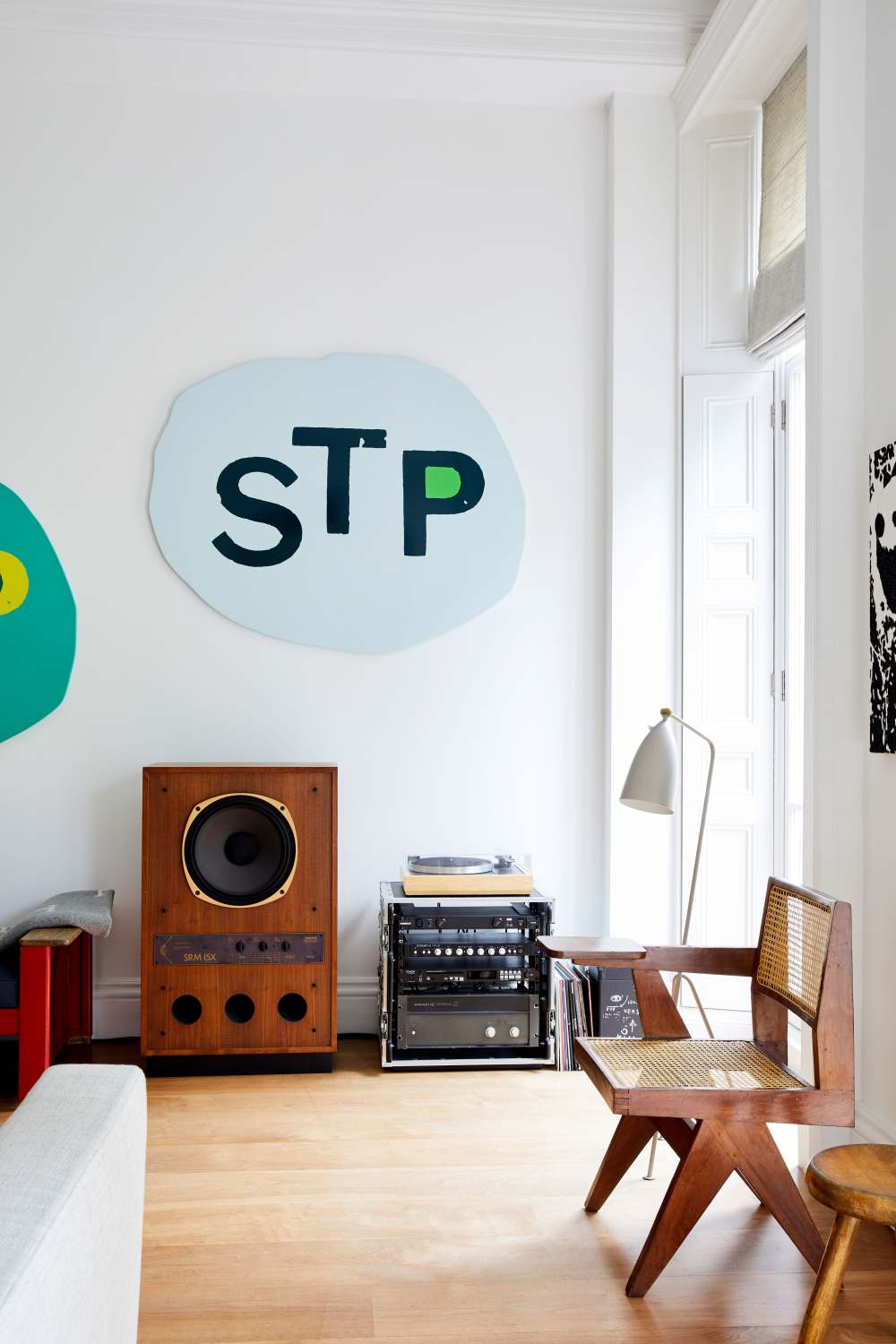
The apartment’s reception rooms open into an ample terrace overlooking a garden square. “Most apartments in London don’t really have outdoor space, only little balconies,” says the designer. “We planted fruit trees recently, and have lunch here in the summer.” The colorful chairs are Moroso’s “Tropicalia” model by Patricia Urquiola.
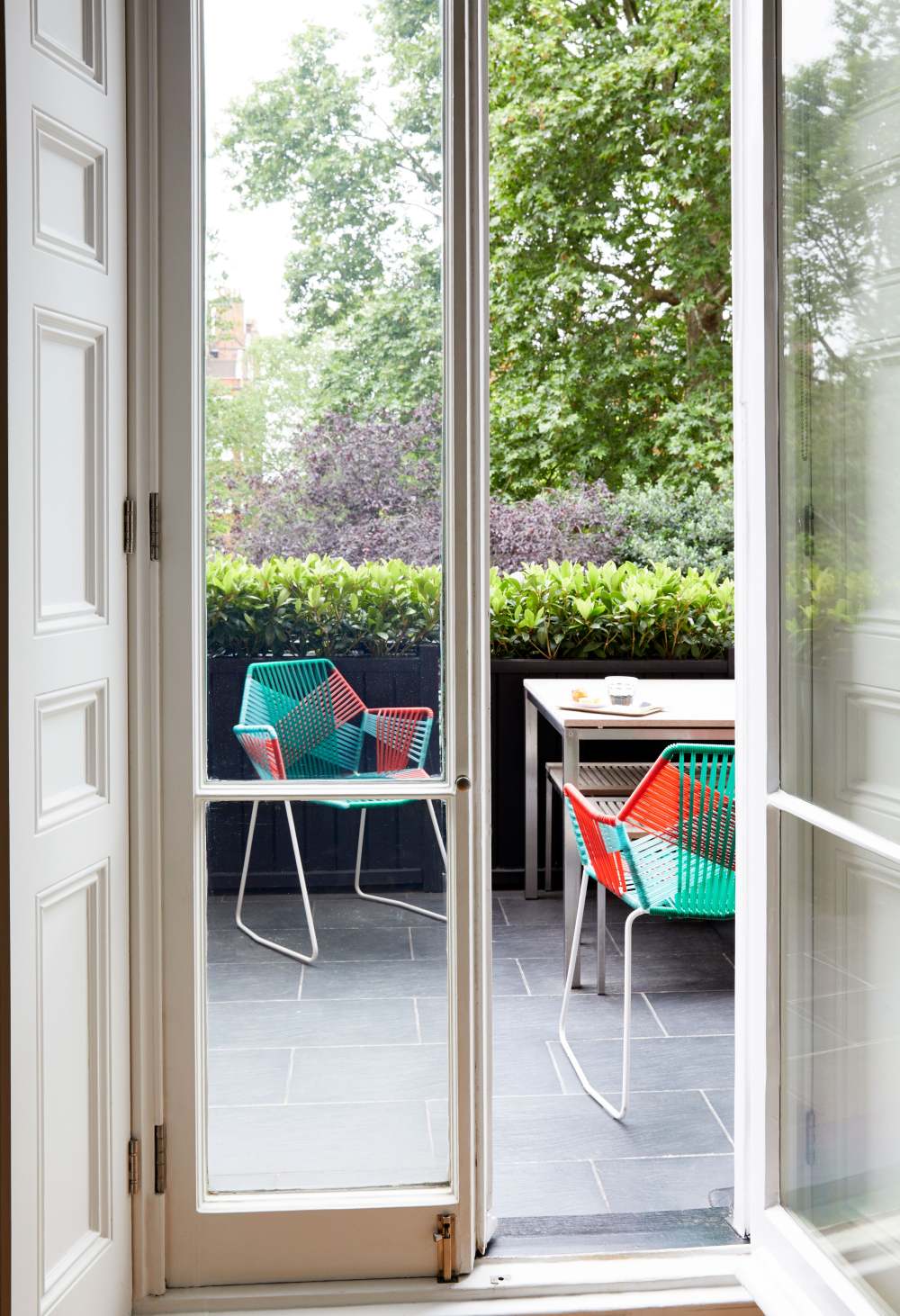
“When I saw this gilded mantel, I had sleepless nights,” says de la Cruz of the fireplace in the formal reception room. “But I saw that it was the original, and then was able to embrace it.” To modernize this Victorian-era ornament, she placed a gold leaf-and-steel “recycle” sign by American artist Kelley Walker. The dark rectilinear sofas, custom-made by Liaigre, were paired with two Jean Royère “croisillon” metal-framed armchairs.

In the formal dining area, a series of Jean Royère “croisillon” chairs are a perfect match for an inkjet-on-linen work by Wade Guyton, depicting two black Xs. The oval table is from Italy’s Azucena, and the oak sideboard is a vintage Jean Prouvé piece.
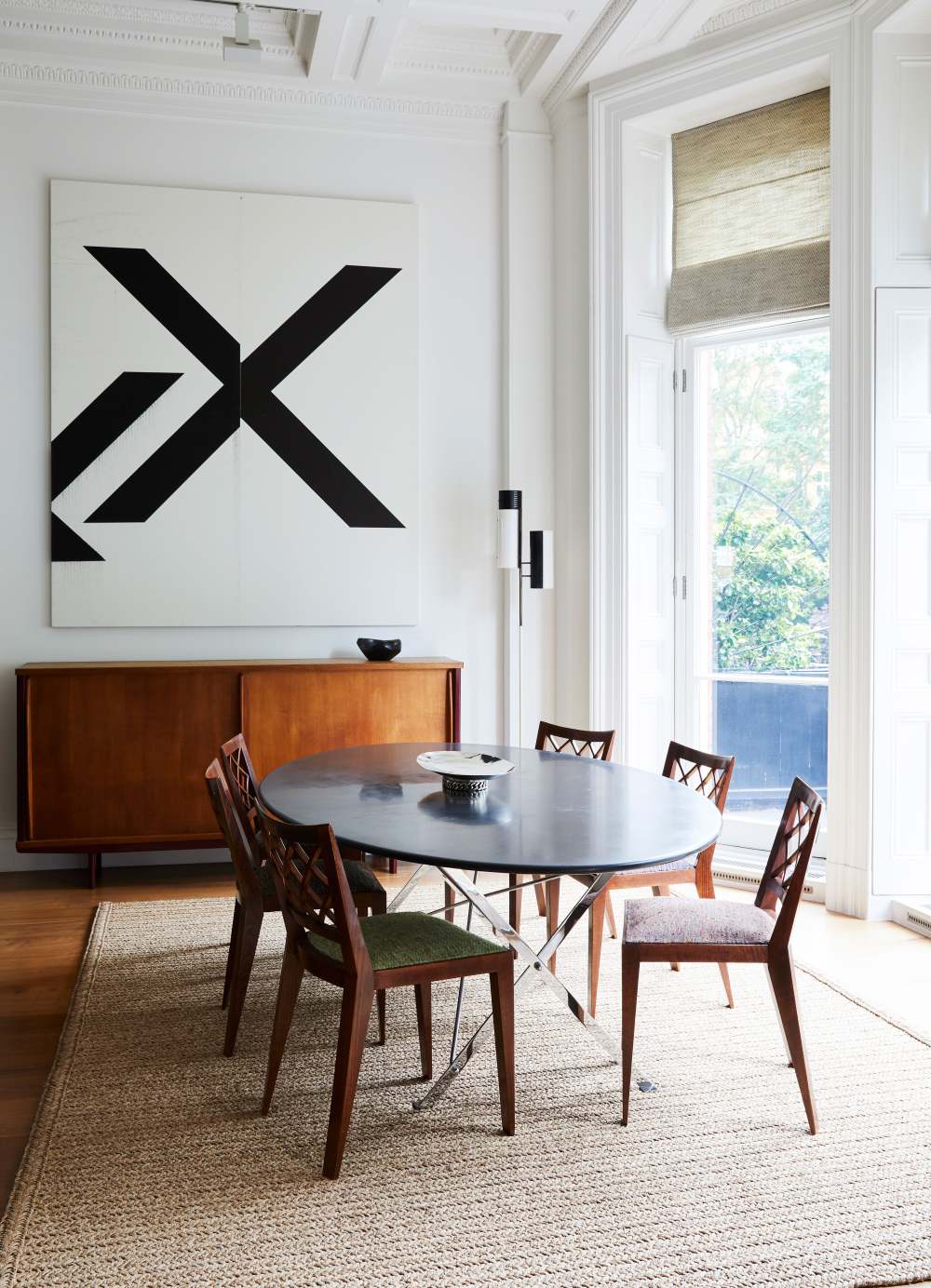
The architects working for de la Cruz gutted the existing kitchen, which had been remodeled in the 1980s and was “small and impractical,” and placed it inside a boxlike structure within one of the vast reception rooms. A custom table and bench were painted black, contrasting with Jasper Morrison’s “Hi Pad” white-leather chairs and stools. The vintage ceiling lamp is a Serge Mouille design.
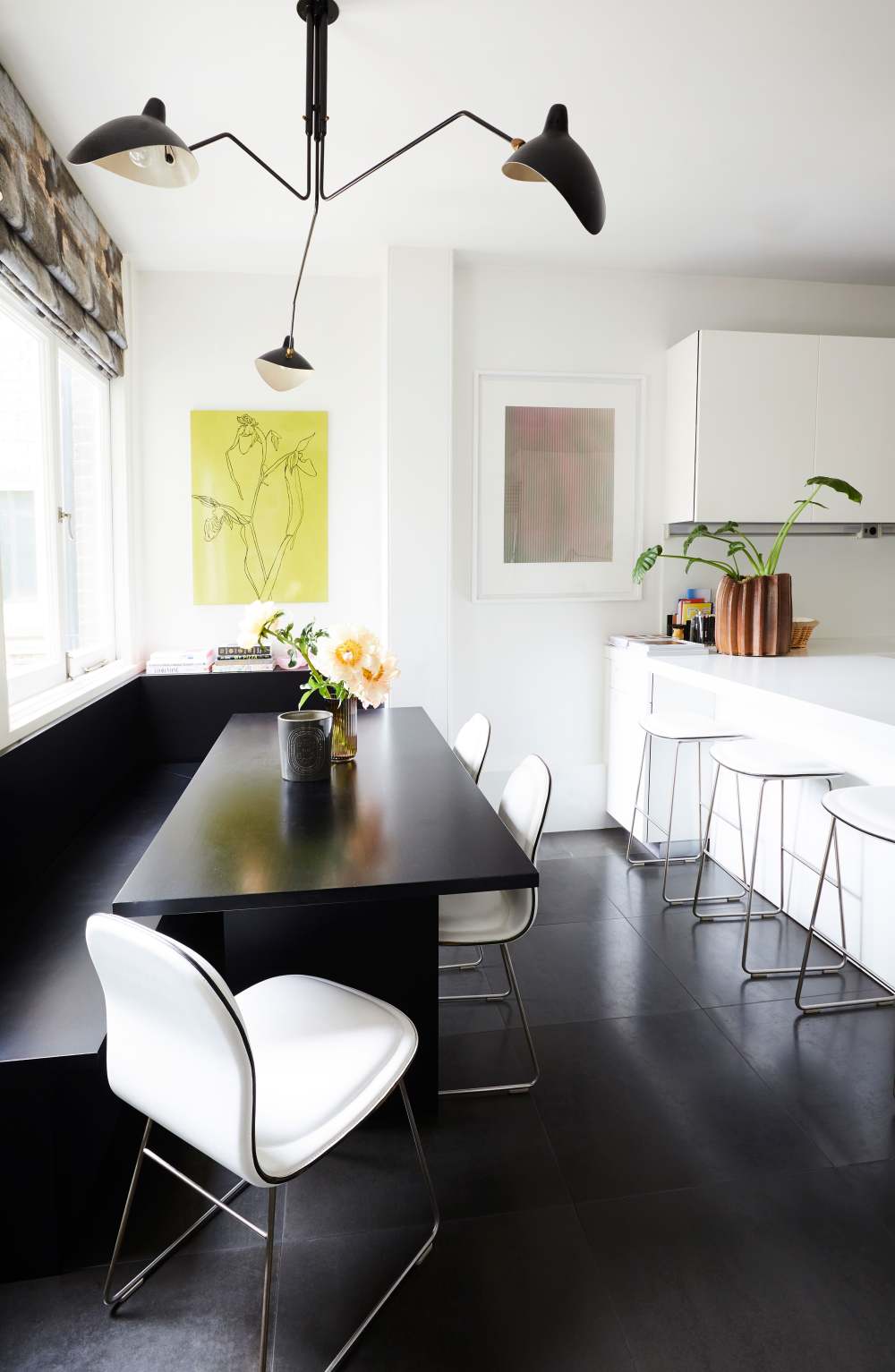
A Thomas Houseago painting of four ghostly figures greets visitors at the entrance. It is nine feet tall and six feet wide, making the vintage Philip Arctander “clam” chairs on either side look almost diminutive.
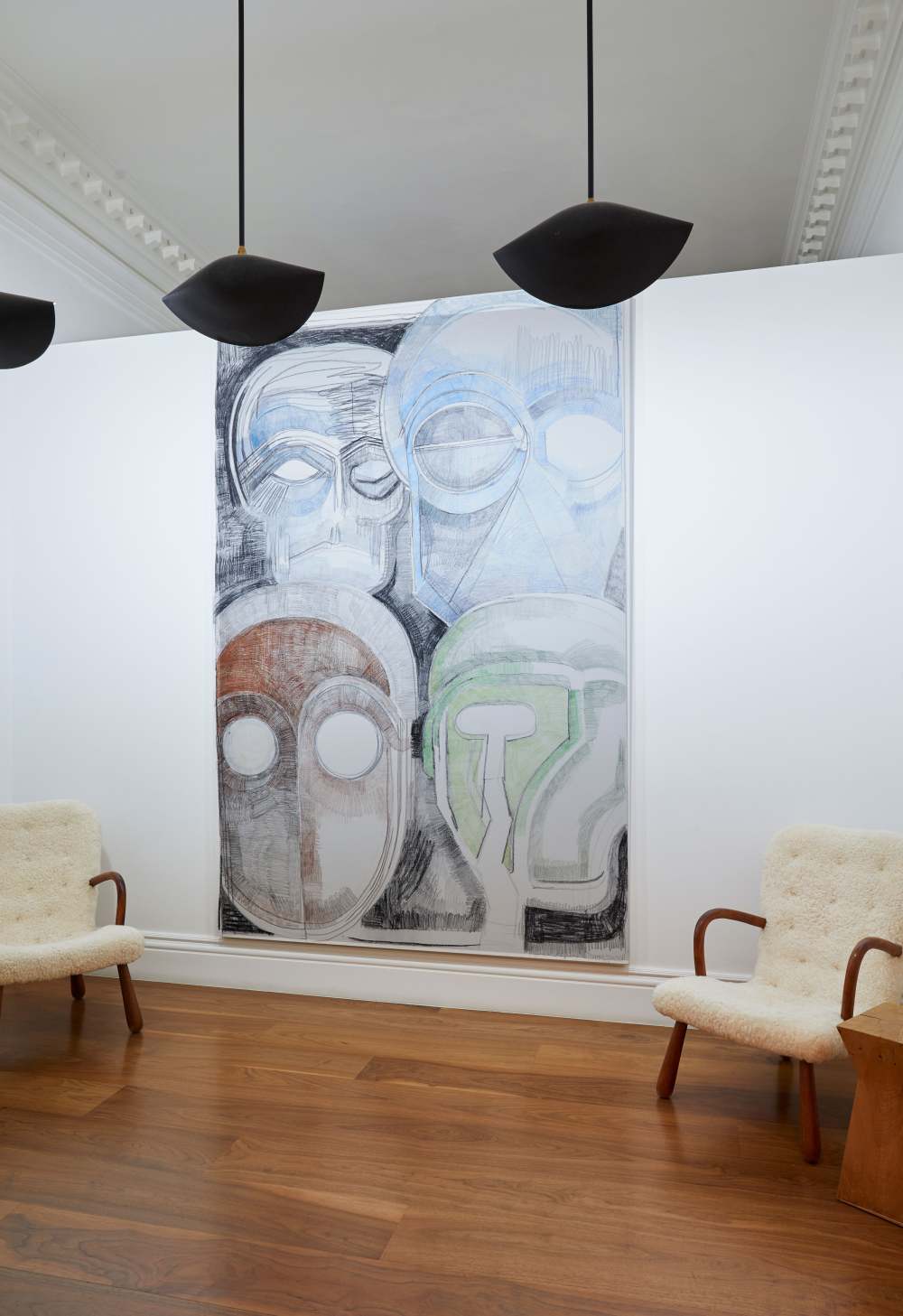
In the entryway, which leads to a black-walled bedroom hall, de la Cruz placed a dark-enameled Jean Prouvé bench and two black-and-white Wade Guyton paintings.
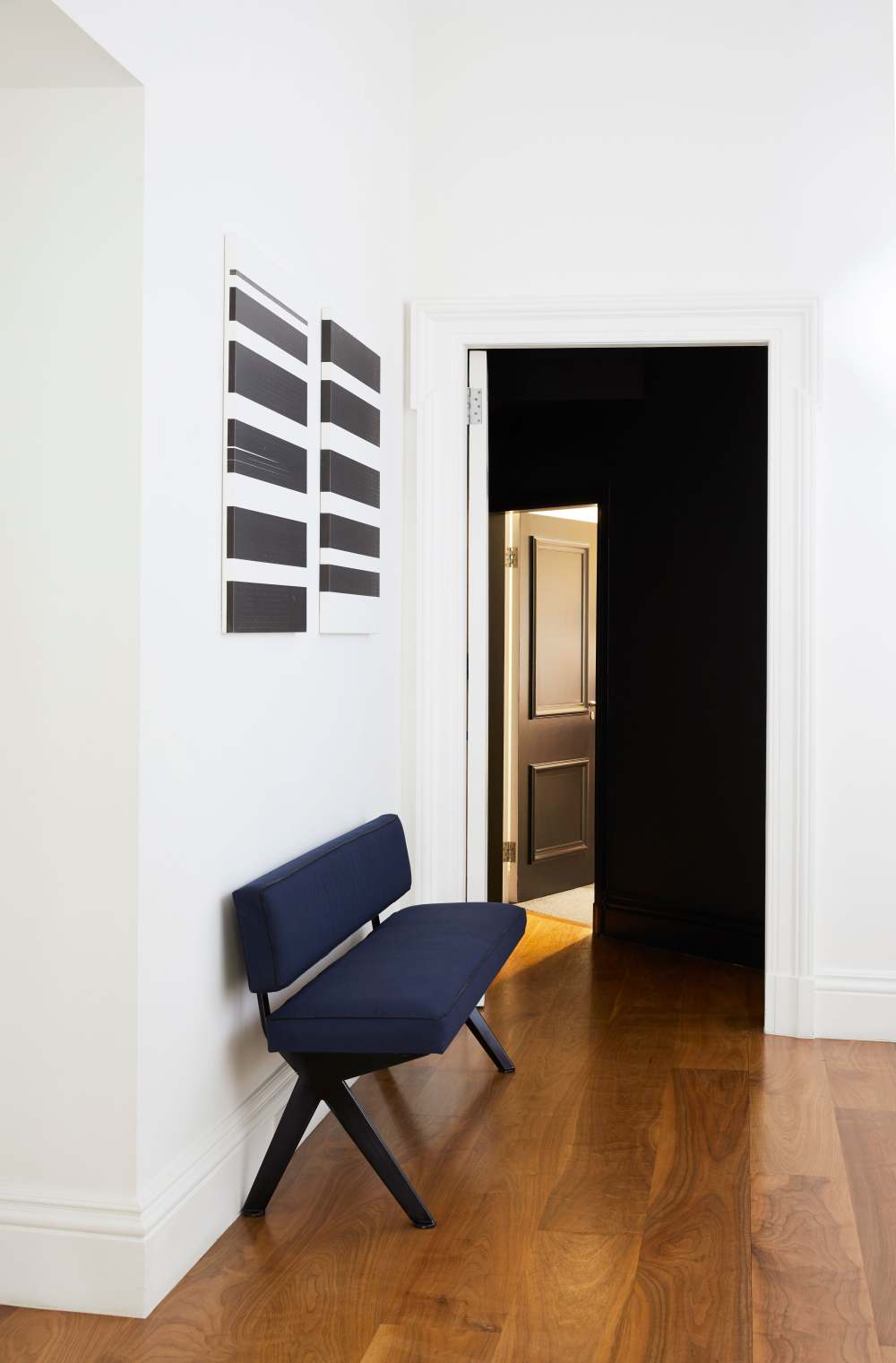
“As you walk from the reception area to the hallway that leads to the bedrooms, the feeling goes from a large white space to a more intimate space,” says de la Cruz. “Our bedroom has this dark-grey wool carpet, which makes it cozy, and we took that further by darkening the entire bottom of the room, leaving the top white.” The armless seats and wooden coffee table are vintage Pierre Jeanneret pieces.
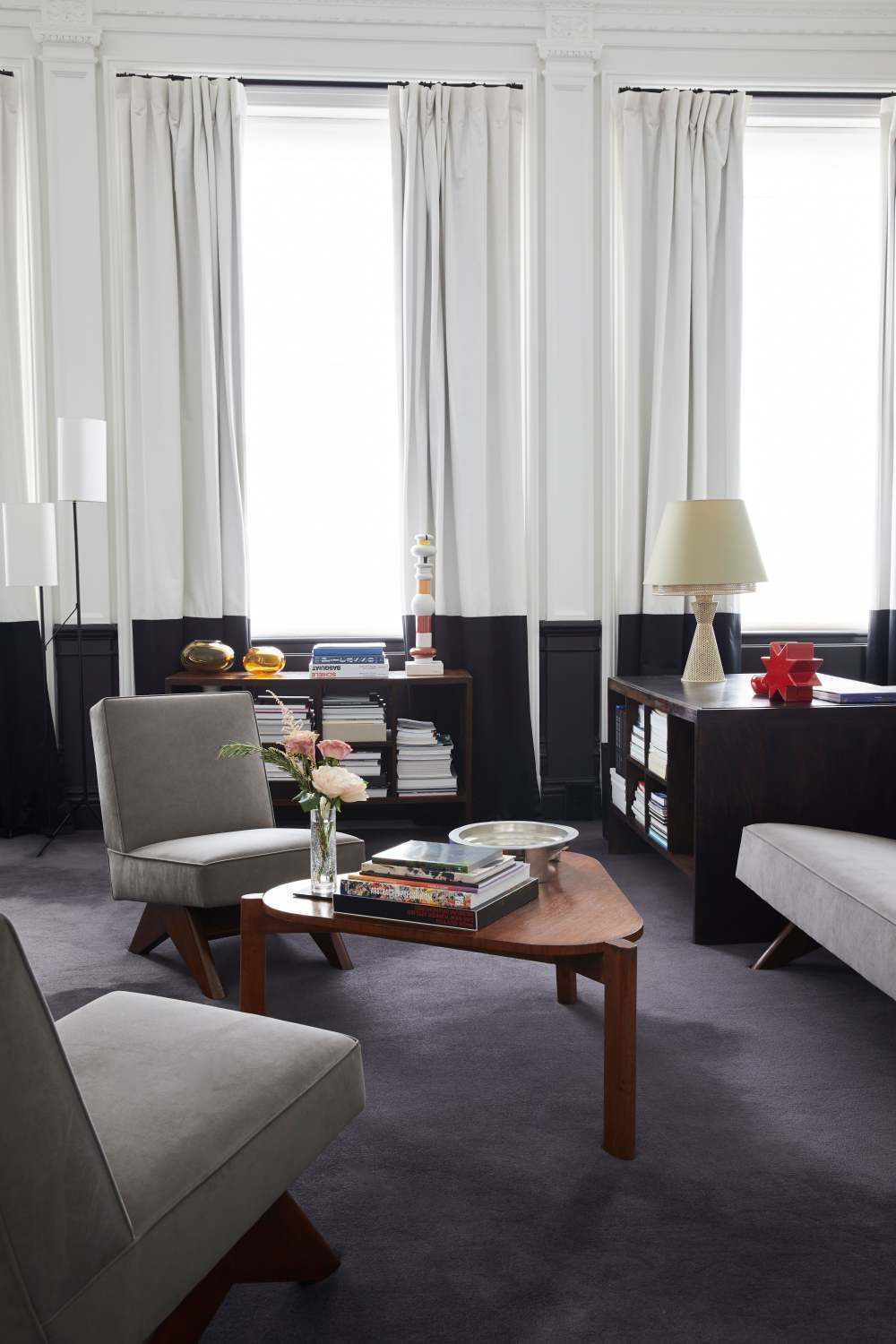
“We use every room in the house; both of the boys’ rooms were set up to look like living areas,” says de la Cruz, whose two younger kids are away at boarding school. “We also happen to be the hosts for the entire enlightened boyhood every time the kids are here.” The upholstered trundle beds from Flou, strewn with colorful Lucien Pellat-Finet cashmere cushions, can transform into double beds. The art on the wall is a signed Damien Hirst promotional poster made for the band The Hours.

The second boys’ room in de la Cruz’s four-bedroom apartment features artworks by Nate Lowman, Joe Bradley, Félix González-Torres, Christopher Wool, Jim Hodges, Albert Oehlen, Laura Owens, and Rachel Harrison, all renowned contemporary artists.
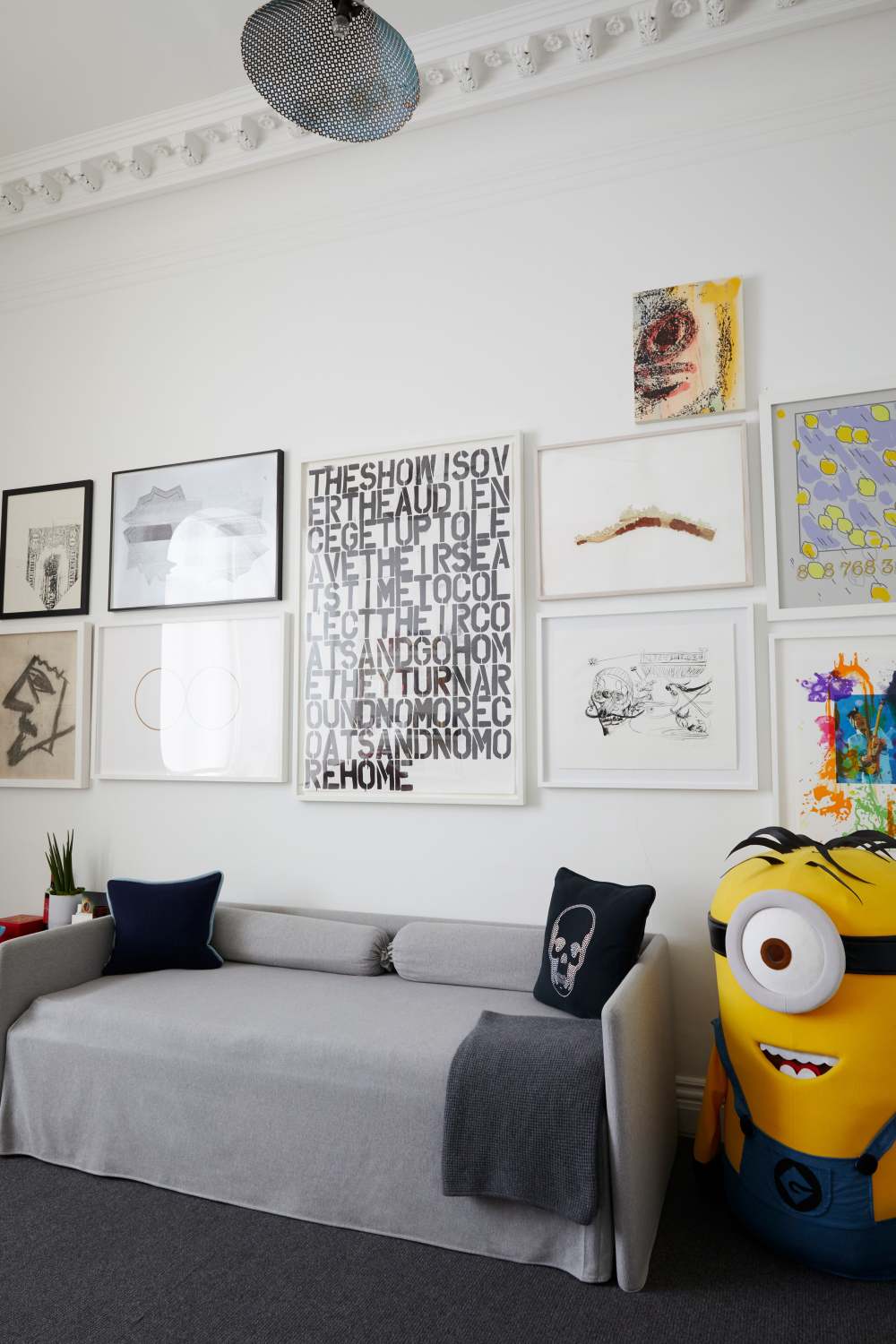
- 转载自:Architectural Digest
- 语言:English
- 阅读原文
|